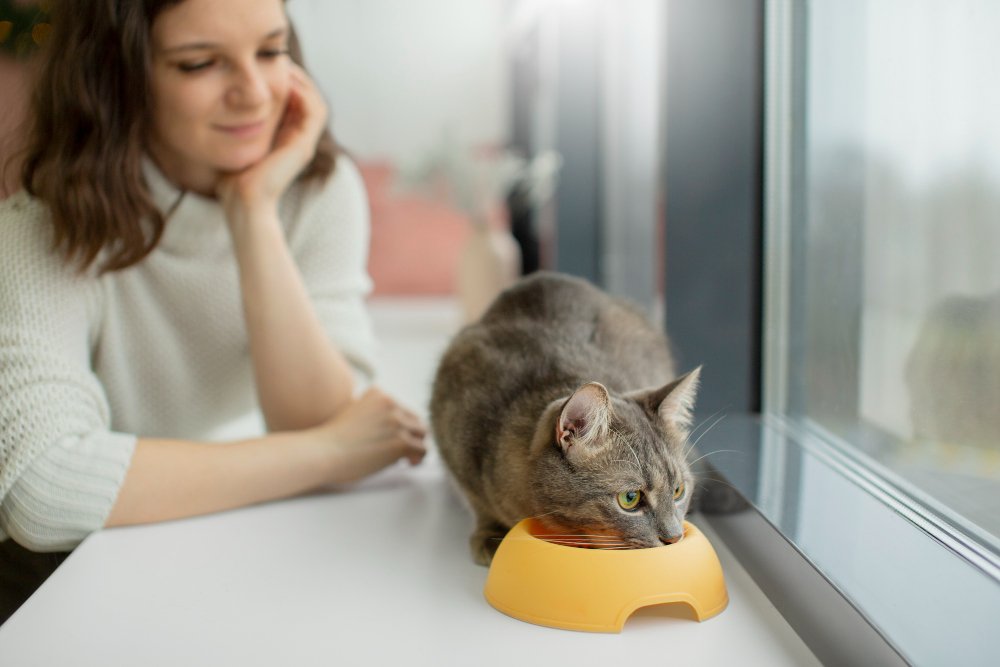Cat Nutrition Guide 2025: What Vets Say About Raw, Dry, and Wet Food
Feeding your cat the right diet is one of the most important things you can do for their long-term health.
But in 2025, with new trends, new food formulas, and new opinions from vets, it’s easy to feel confused.
Should you feed raw?
Is dry food still okay?
Is wet food better?
Do cats need a mix?
What do vets actually recommend today?
This guide breaks everything down in a simple way so you can make confident choices for your cat.
Why Cat Nutrition Matters More in 2025
Over recent years, vets have seen big changes in cat health:
-
More indoor cats
-
More overweight cats
-
More kidney disease
-
More allergies
-
More trendy diets causing imbalance
Nutrition affects everything:
-
Energy
-
Coat health
-
Digestion
-
Hydration
-
Weight
-
Mobility
-
Lifespan
Feeding the right food today prevents problems later.
Understanding Cat Food Options in 2025
Dry Food (Kibble)
Dry food remains one of the most common diets in 2025.
Benefits
-
Affordable
-
Easy to store
-
Simple to portion
-
Slight crunch for teeth
Concerns
-
Very low moisture
-
Overeating is common
-
Quality varies
-
Can include fillers
What Vets Say
Dry food is fine if it’s high-quality, but moisture must be added elsewhere—especially for adult and senior cats.
Wet Food (Canned or Pouch)
Wet food continues to be a top vet recommendation.
Benefits
-
High moisture for hydration
-
Kidney- and urinary-friendly
-
Easier to digest
-
Higher protein quality
Concerns
-
More expensive
-
Needs refrigeration
-
Slightly messier
What Vets Say
Most vets recommend feeding at least one wet meal per day for better hydration and digestion.
Raw Food (Fresh or Frozen)
Raw feeding is more popular in 2025 than ever.
Benefits
-
Natural ingredients
-
High protein
-
Great for coat and muscle
-
Less processed
Concerns
-
Hard to balance at home
-
Bacteria risk
-
Expensive
-
Not suitable for all cats
What Vets Say
Commercial raw diets are acceptable if complete and balanced.
Homemade raw without vet guidance is discouraged.
How to Choose the Right Diet for Your Cat in 2025
Start With Age
Kittens
High protein and frequent meals.
Adults
Stable calories and balanced nutrients.
Seniors
High moisture and kidney-supportive diets.
Consider Health Conditions
Certain diets support:
-
Urinary health
-
Sensitive stomachs
-
Weight loss
-
Allergy management
-
Kidney health
Ask your vet before changing diets if your cat has diagnosed issues.
Read the Label Carefully
Look For
-
Real meat first
-
Clear protein names
-
Taurine
-
Omega-3s
-
Simple ingredients
Avoid
-
Unnamed by-products
-
Sugars
-
Artificial colors
-
Heavy fillers
Check Protein Quality
Cats need animal-based protein.
High protein only works if it comes from:
-
Chicken
-
Turkey
-
Beef
-
Fish
-
Other clean meat sources
Switch Foods Slowly
A safe transition takes 7–8 days:
-
Day 1–2: 25% new
-
Day 3–4: 50% new
-
Day 5–6: 75% new
-
Day 7–8: 100% new
What Vets Recommend Most in 2025
.jpg)
Hydration is the top priority.
Vets recommend:
-
Daily wet food
-
Broth toppers
-
Water fountains
-
High-moisture diets
Even dry-fed cats need moisture added to their routine.
Is Mixed Feeding Best?
Yes — here’s why
A combination diet offers:
-
Hydration from wet food
-
Convenience from kibble
-
Better nutrient balance
-
Reduced risk of deficiencies
A common routine:
-
Morning → Wet food
-
Evening → Dry food
-
Weekly → Raw or freeze-dried topper
Top Cat Nutrition Trends in 2025
1. Higher-Protein Wet Food
More brands are increasing real meat content.
2. Raw-Infused Kibble
Kibble with freeze-dried raw pieces.
3. Freeze-Dried Raw Meals
Shelf-stable raw that’s safer and easier.
4. Human-Grade Ingredients
Cleaner and more transparent labels.
5. Functional Supplements
For digestion, joints, and skin.
6. Allergen-Friendly Diets
Simpler ingredient lists.
Signs Your Cat’s Diet Needs a Change
Watch for:
-
Dull coat
-
Constipation
-
Diarrhea
-
Frequent vomiting
-
Low energy
-
Weight loss
-
Weight gain
-
Increased thirst
-
Hunger after meals
A simple diet adjustment often helps fast.
How to Build a Healthy Feeding Routine
Tips
-
Feed at the same time daily
-
Measure portions
-
Keep fresh water available
-
Use a water fountain
-
Mix wet and dry
-
Store food properly
-
Avoid sudden changes
Consistency keeps your cat healthier.
FAQs
Is wet food better than dry?
Better for hydration, but both can be healthy depending on ingredients.
Is raw food safe?
Commercial raw is safer than homemade raw.
Can I feed dry food only?
Yes, but you must add hydration through wet food or broths.
How much should I feed?
Depends on age, weight, and activity.
Follow guidelines, then adjust.
Do cats need supplements?
Only if recommended by a vet.
Conclusion
Cat nutrition in 2025 is more advanced than ever, but the rules are simple:
-
Choose quality ingredients
-
Prioritize moisture
-
Balance protein
-
Support your cat’s age and health
-
Transition slowly
Whether you choose raw, dry, wet, or a mix, the goal is the same: a healthier, happier cat.
Call to Action
Want a healthier, more energetic cat?
Start improving their nutrition today.
Choose better ingredients, increase moisture, and build a routine that supports long-term wellness.







.jpg)

